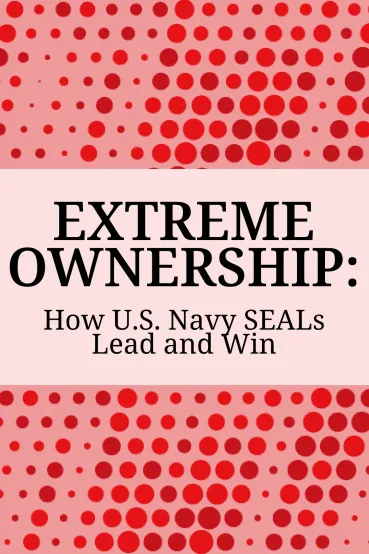
Extreme Ownership
Brief Summary
“Extreme Ownership” by Jocko Willink and Leif Babin is a guide to leadership based on the authors' experiences as Navy SEALs. The authors focus on taking full responsibility for one's actions as an individual and as part of a team. Through personal anecdotes and practical advice, the book provides a framework for achieving success by embracing extreme ownership.
Key points
Key idea 1 of 7
What does leadership mean? It's not getting smug because of your position but taking responsibility for mistakes. Let's look at an example. It was the year 2012 when Jocko Willink had a mission in Iraq. When a friendly fire incident occurred, he was in charge of a SEAL unit. At that time, nobody thought of friendly fire. The enemy’s attack was the only thought. The result was tragic – one of Willink's subordinates passed away.
The incident emphasizes the significance of taking responsibility for mistakes. It also shows how vital it is to improve communication within a team. Although not directly responsible for the mistake, Willink took ownership of the tragedy. This act of extreme ownership saved his job and earned him his team's respect and loyalty. His leadership and accountability inspired the soldiers. Jocko Willink demonstrated a vital leadership principle. Good leaders own up to their mistakes, while many may overlook this.
The significance of a commander's attitude is evident in the worst-case training that SEAL teams go through. Those who perform poorly during such operations usually have leaders who blame the scenario. They are setting their mission up for failure by failing to admit their mistakes.
Willink's experience shows that a team becomes dysfunctional when the leader refuses to accept responsibility. A poor SEAL leader, who shifts blame to others, can affect his subordinates. They then adopt the same attitude. The group becomes incapable of executing plans. Ultimately, a team that makes excuses and avoids accountability cannot adjust and solve the issues that arise. At the same time, a group that values responsibility and initiative is better equipped to tackle challenges.
Conversely, the top-performing SEAL groups in practice have a different type of leader in charge. Their leaders take the blame, look for helpful suggestions, and take down ways to get better. When leaders accept responsibility, their subordinates are more likely to follow suit. It fosters a culture of accountability and initiative throughout the chain of command.
FAQ
You may also like these summaries











